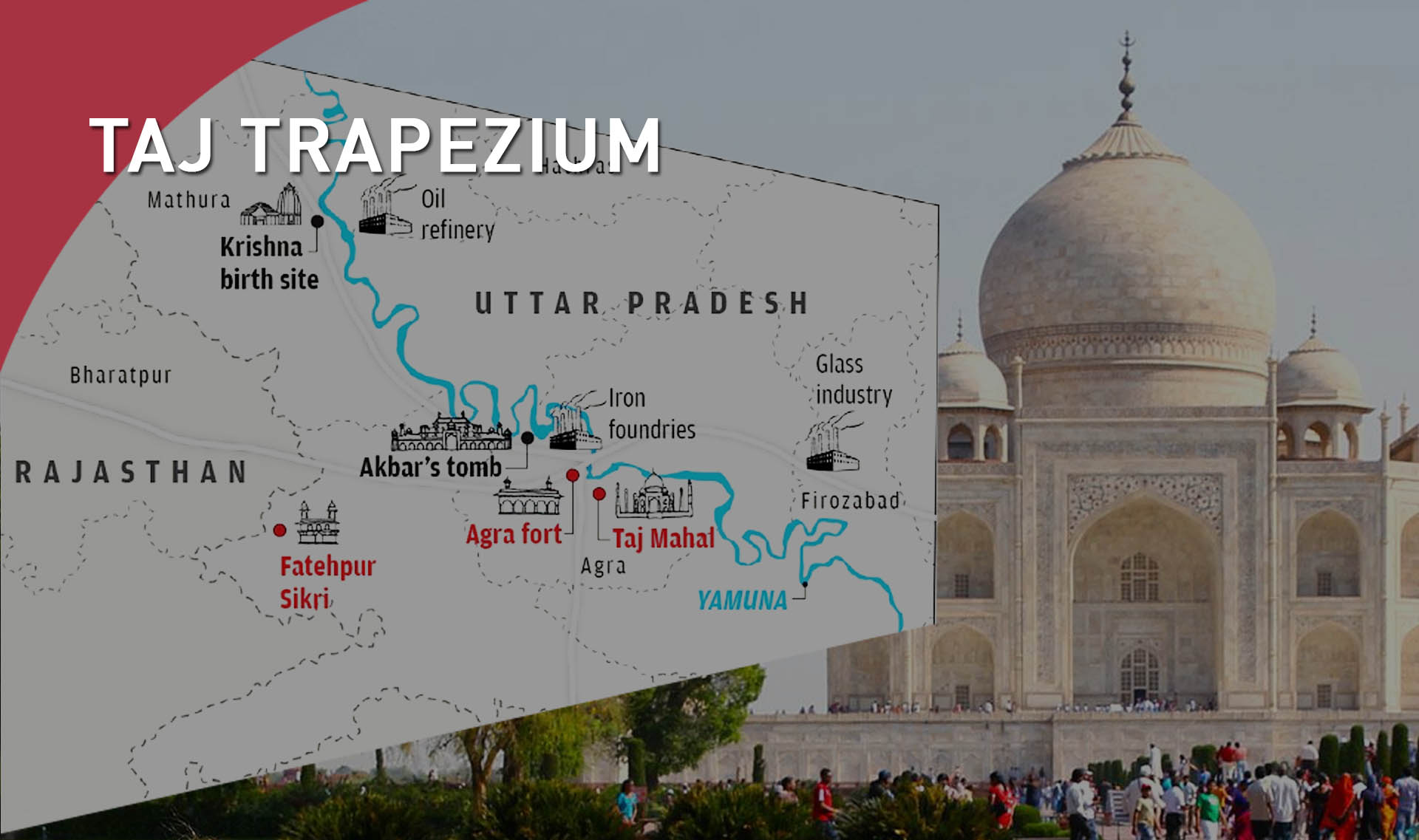Uttar Pradesh Switch to Hindi
Taj Mahal Conservation Efforts
Why in News?
The Supreme Court of India has directed the National Environmental Engineering Research Institute (NEERI) to assess the environmental impact of glass industries on the Taj Mahal.
Key Points
- About the Court’s Instruction:
- The court directed NEERI to submit a report along with a timeline for evaluation.
- The court also directed the Uttar Pradesh Pollution Control Board to constitute a special team, which will inspect the affected industries, assess the pollution level and submit an interim report.
- It was clarified that if it is confirmed that glass industries are causing pollution, there will be no hesitation in ordering the shifting of these units.
- The direction comes in the context of earlier criticism by the Supreme Court regarding the environmental protection measures by the Taj Trapezium Zone (TTZ) Authority.
- Taj Trapezium Zone (TTZ):
- This is a designated area of 10,400 square km around the Taj Mahal to protect it from pollution.
- The TTZ comprises several monuments, including three World Heritage Sites (Taj Mahal, Agra Fort and Fatehpur Sikri).
- It is named so due to its trapezoidal shape.
- Industries under this zone are classified into red, orange, green and white categories depending on the level of pollution.
- The TTZ framework is responsible for pollution control, air quality monitoring and ensuring the long-term preservation of the Taj Mahal’s environmental integrity.
- Taj Mahal:
- Construction:
- The Taj Mahal was built by the Mughal emperor Shah Jahan in memory of his wife Mumtaz Mahal.
- Ustad Ahmad Lahori is considered its chief architect.
- Its construction began in 1632 AD and was completed in 1648 AD.
- It was built by artisans from the Mughal Empire, Central Asia, and Iran.
- The Taj Mahal was built by the Mughal emperor Shah Jahan in memory of his wife Mumtaz Mahal.
- Location and Structure:
- Taj Mahal is situated on the right bank of Yamuna in Agra, Uttar Pradesh. It is enclosed within a 17-hectare Mughal garden which follows the Timurid-Persian Charbagh layout with four subdivided quarters.
- Constructed with brick-in-lime mortar, red sandstone, and white marble (quarried from Makrana (Rajasthan) for the main structure).
- It had extensive inlay work using gemstones like jade, crystal, turquoise, lapis lazuli, etc.
- The tomb chamber is octagonal with four additional corner rooms and a central space containing the tombs of Mumtaz Mahal and Shah Jahan.
- Real graves lie in the lower crypt, following Mughal tradition.
- The tomb’s structure forms a chamfered square, giving it eight sides with deep recessed arches.
- UNESCO World Heritage Recognition:
- In 1983, UNESCO inscribed the Taj Mahal on the World Heritage List under Criterion (i), recognizing it as a masterpiece of human creative genius.
- It is one of the famous Seven Wonders of the World.
- In 1983, UNESCO inscribed the Taj Mahal on the World Heritage List under Criterion (i), recognizing it as a masterpiece of human creative genius.
- Conservation and Management:
- The Taj Mahal was declared a centrally protected monument of national importance in the year 1920.
- It is managed by the Archaeological Survey of India (ASI).
- It is protected under the Ancient Monuments and Archaeological Sites and Remains Act, 1958 and the 1959 Rules and is enclosed within TTZ.
- Construction:
National Environmental Engineering Research Institute (NEERI)
- NEERI, established in 1958 at Nagpur, is a premier research institute under the Council of Scientific and Industrial Research (CSIR), functioning under the Ministry of Science and Technology.
- It plays a vital role in environmental management, pollution control and sustainable development through research and development, policy development and technological innovation.
- Headquartered in Nagpur, NEERI operates five regional laboratories located in Chennai, Delhi, Hyderabad, Kolkata, and Mumbai.










%20MPPCS%202025%20Desktop%20E.jpg)
%20MPPCS%202025%20Mobile%20E%20(1).jpg)





















 PCS Parikshan
PCS Parikshan


